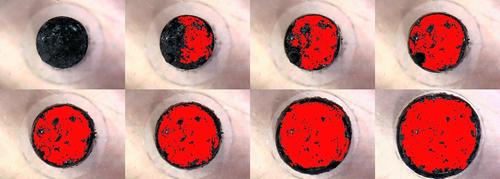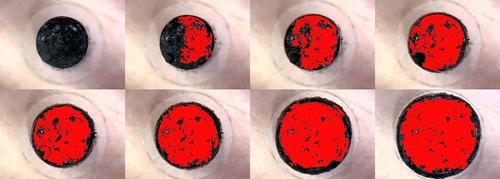Fraunhofer Designs Flexible Energy Harvesters for Wearable Tech
April 2, 2014

The development of wearable electronics demands new types of power sources that are flexible and compact enough to fit into these devices. Researchers at the Fraunhofer Institute in Germany are working on this problem with the design of a flexible energy harvester that can be manufactured through a low-cost printing process.
The FP7 MATFLEXEND project at the Fraunhofer-Institut fur Zuverlassigkeit und Mikrointegration (IZM) is developing harvesters that convert mechanical deformation into energy by using a capacitive converter exploiting a capacitor's deformation, according to information about the project on the institute's website.

In other words, "flexible rubber-like or liquid metal electrodes are used to change the capacity of an capacitor when it is pressed," Dr. Robert Hahn, one of the researchers on the project and head of the Fraunhofer IZM Micro Energy Systems Group, told Design News. "Charging and discharging the capacitor at the right moment allows to extract charges at higher voltage than during charging and thus generate electrical energy from mechanical deformation." The harvester must be fixed somewhere for the mechanical deformation to be applied, "like pressing an electronic smart card or a shoe insole," he told us.
Fraunhofer IZM is leading the design and the development of both the harvester and a flexible lithium-ion battery with coplanar electrodes to store energy from the harvester. Researchers at the institute will integrate these into a single device.
The harvester is aimed for use with smart wearable technology, including wearables for medical sensors or in other consumer products, as well as sports equipment that uses sensors to measure performance and body metrics. The device also could be used in energy-harvesting shoe insoles since the method for creating energy is conducive to this application, Hahn said. Other applications of the harvesters might include security clothing or technical textiles that use electronic sensing but would be cumbersome or impractical with wires.
A number of research and industry partners also are taking part in various aspects of the project. University partners like the University of Vienna in Austria and the Imperial College London in the UK are working together to develop materials for the device, including durable elastomers, novel multi-phase battery separators, and high-k dielectrics. CETEMMSA, a Spanish research organization, will investigate production of the device, including its mass manufacturability through an as-yet-to-be-decided low-cost printing process.
Researchers are eyeing a number of options for printing the device, including dielectric ones like spray- or spin-coating, screen-printing, or doctor blading, Hahn told us. Elastic electrode methods like molding, screen-printing, stencil printing, dispensing, and jetting also could be used to fabricate the harvesters.
LAAS-CNRS of France will contribute a new process for electrophoretic deposition (EPD) for a variety of battery electrode materials that will be used in the project, while industry partner VARTA Microbattery GmbH will test and assess industrial manufacturability of the batteries. Other partners will work on commercial products for the harvester. Comcard GmbH of Germany will work toward integration of the device into a smart card system, while SMARTEX, of Italy, will design wearable applications in cooperation with its network in the fashion industry.
The project runs through September 2016. Hahn expects commercialization of the harvesters about a year after the project ends.
Related posts:
About the Author(s)
You May Also Like



